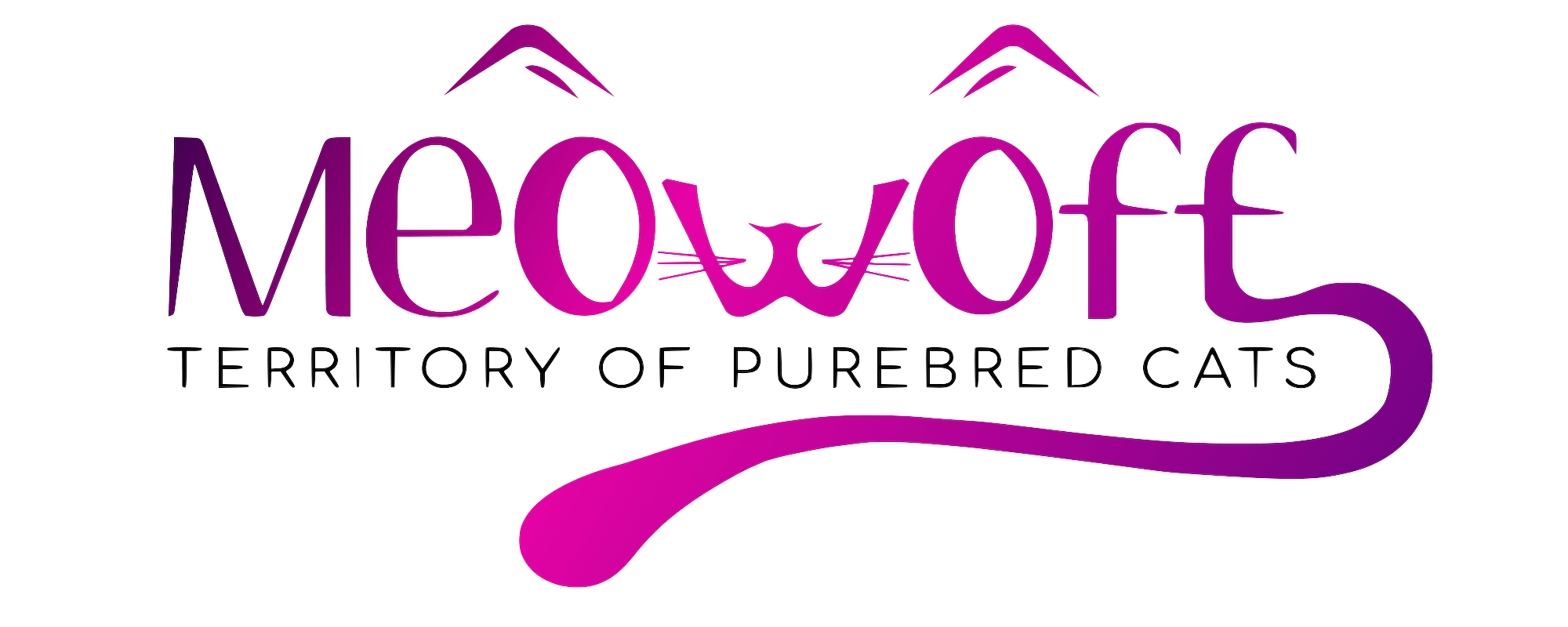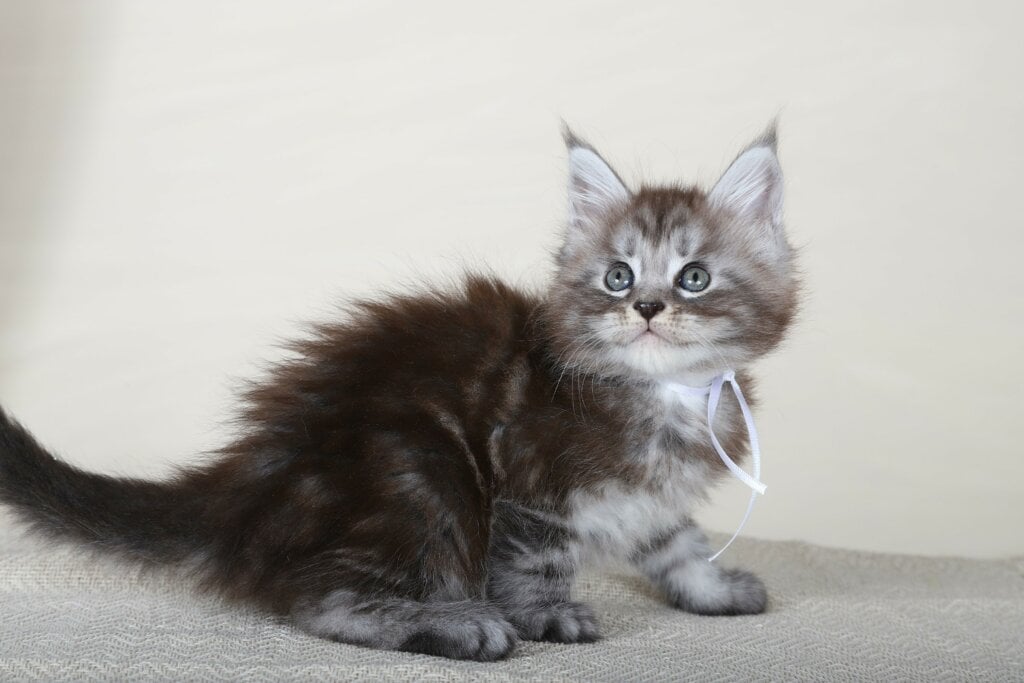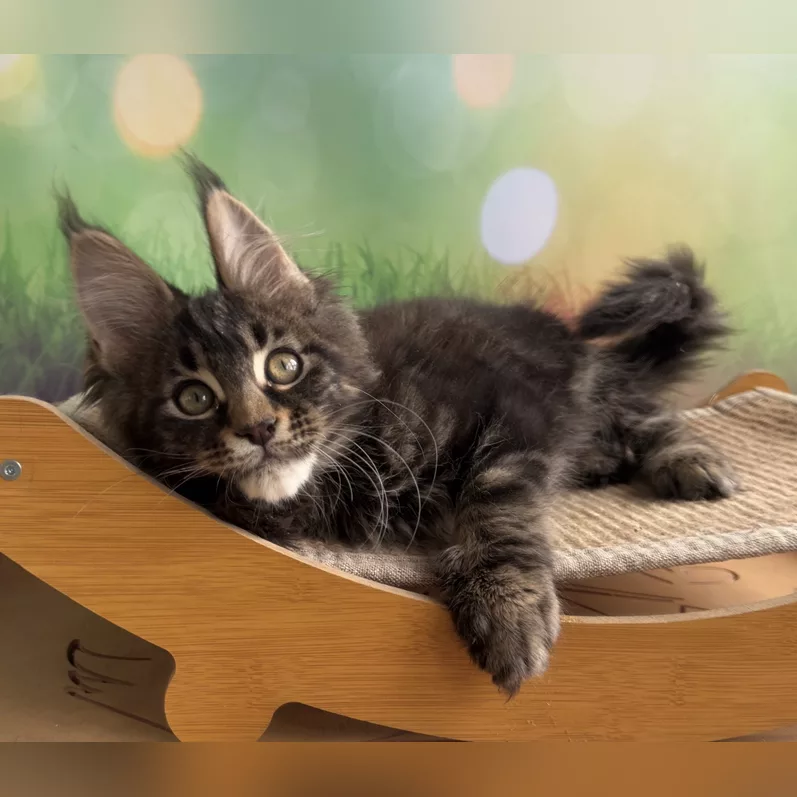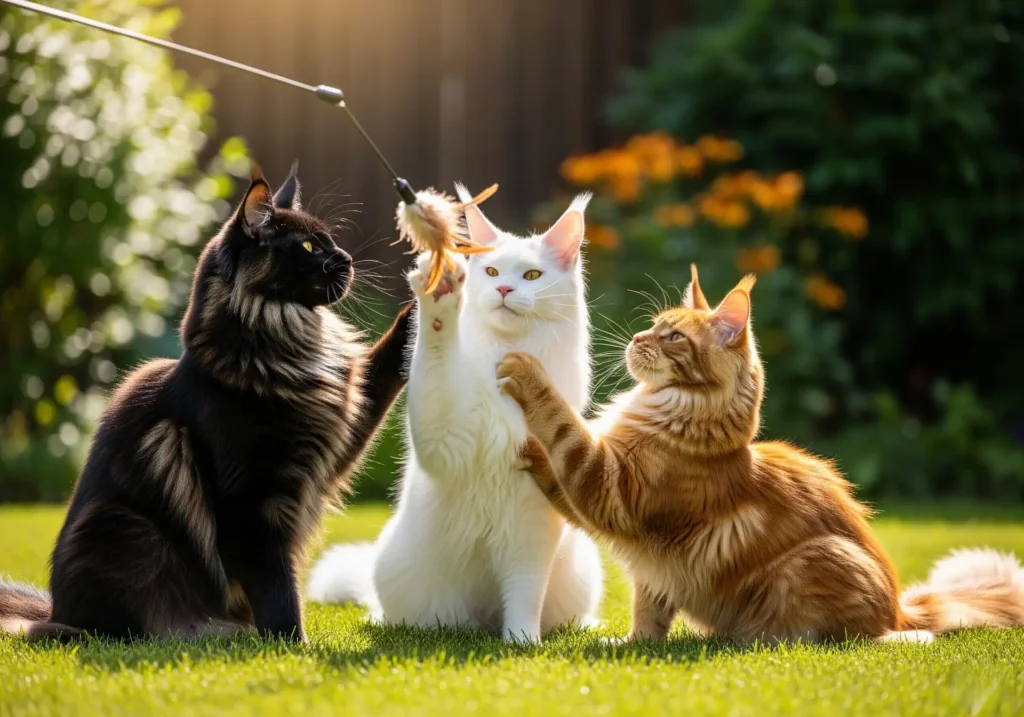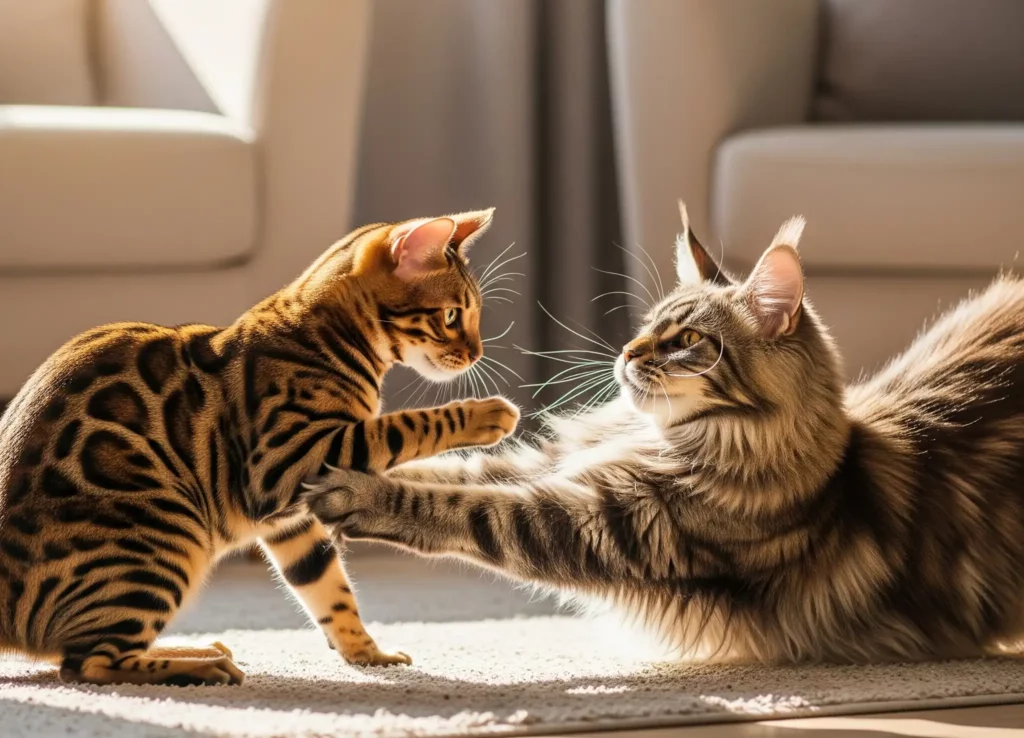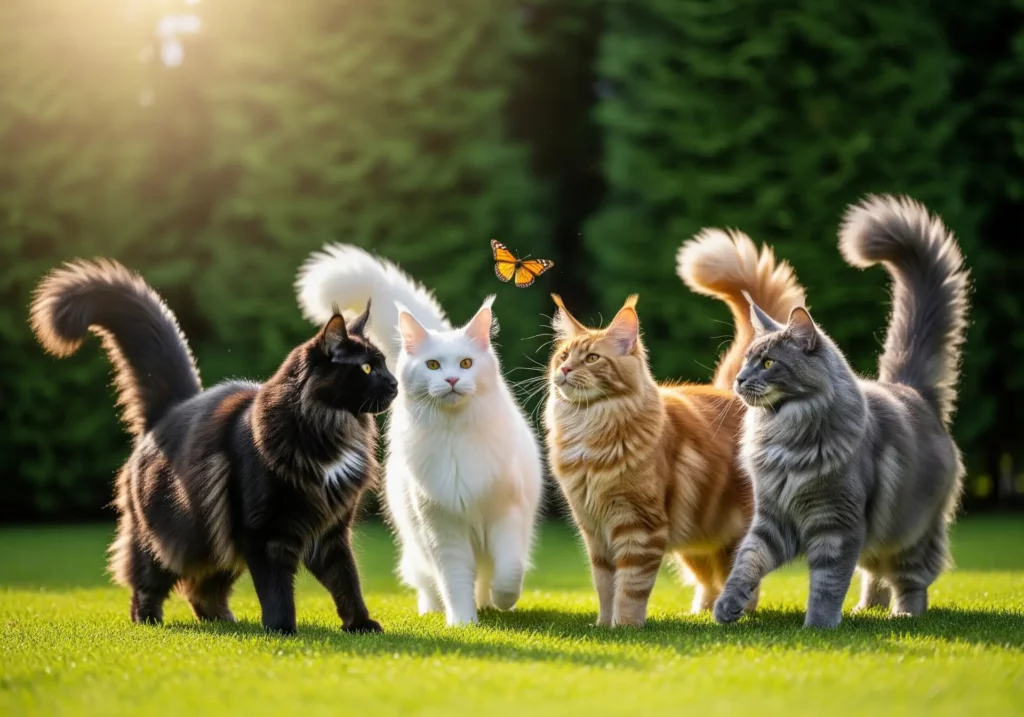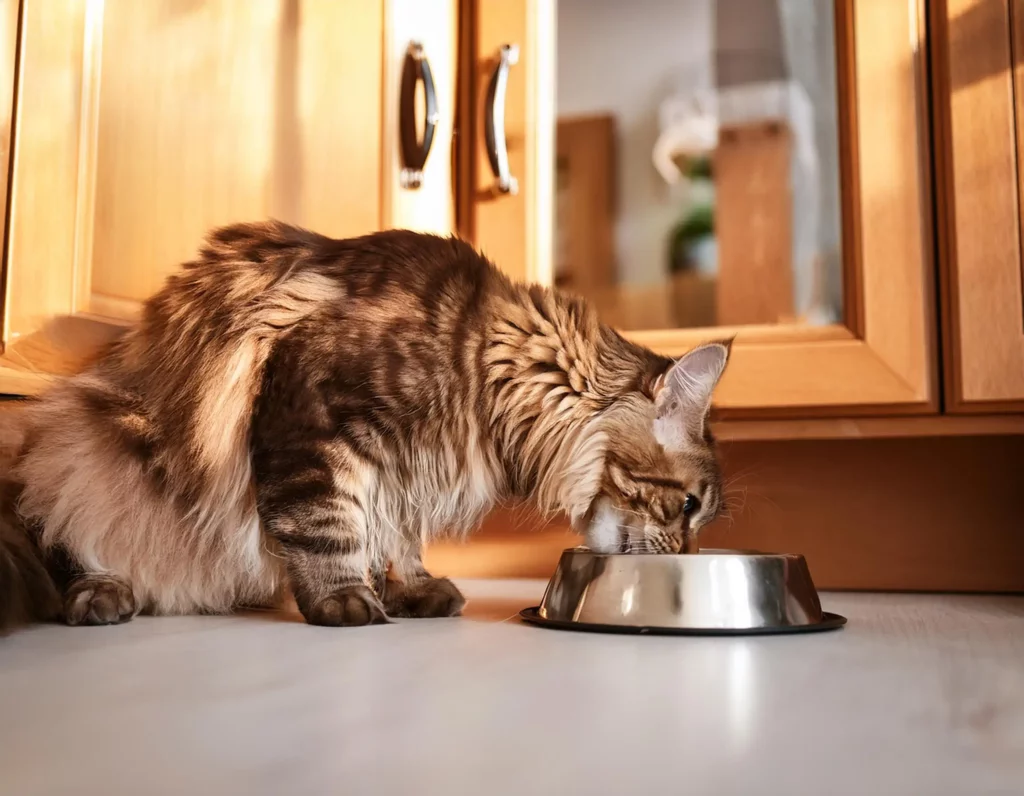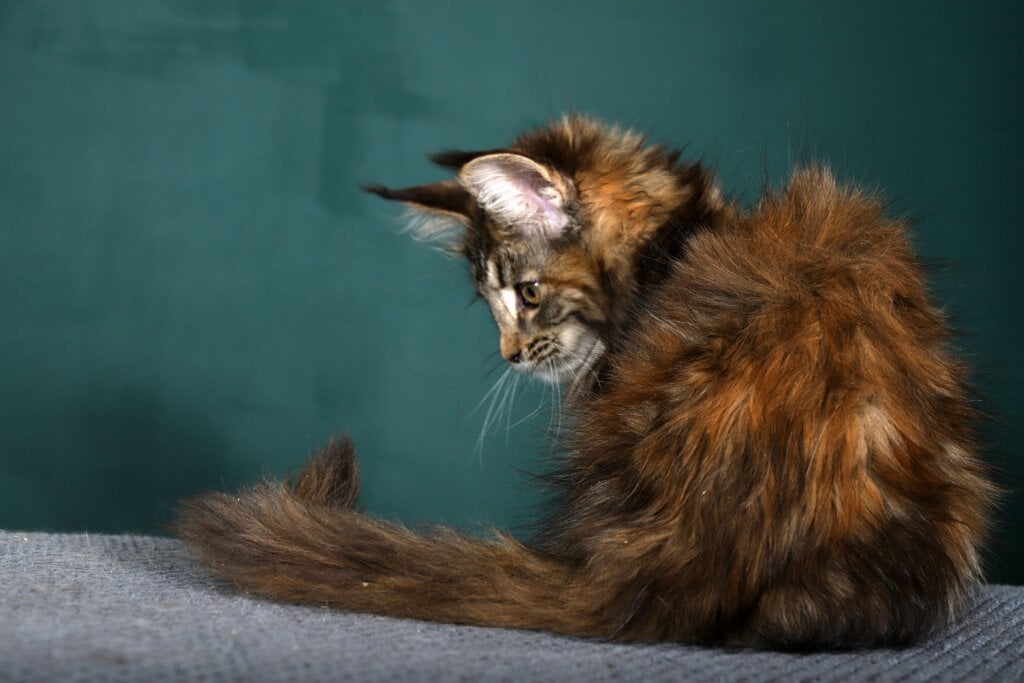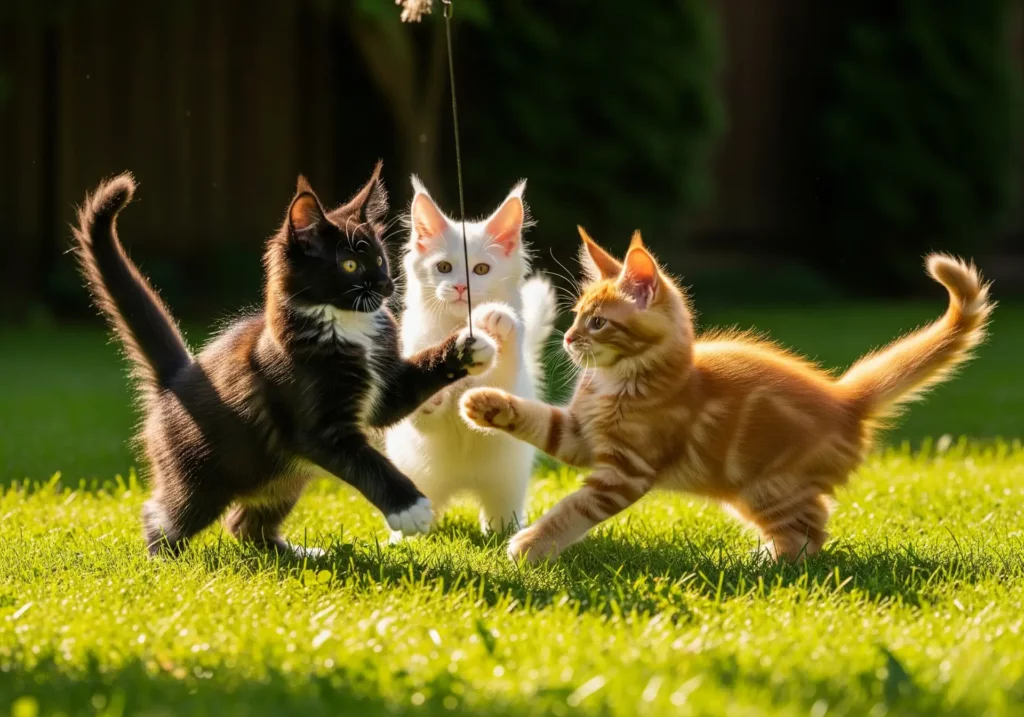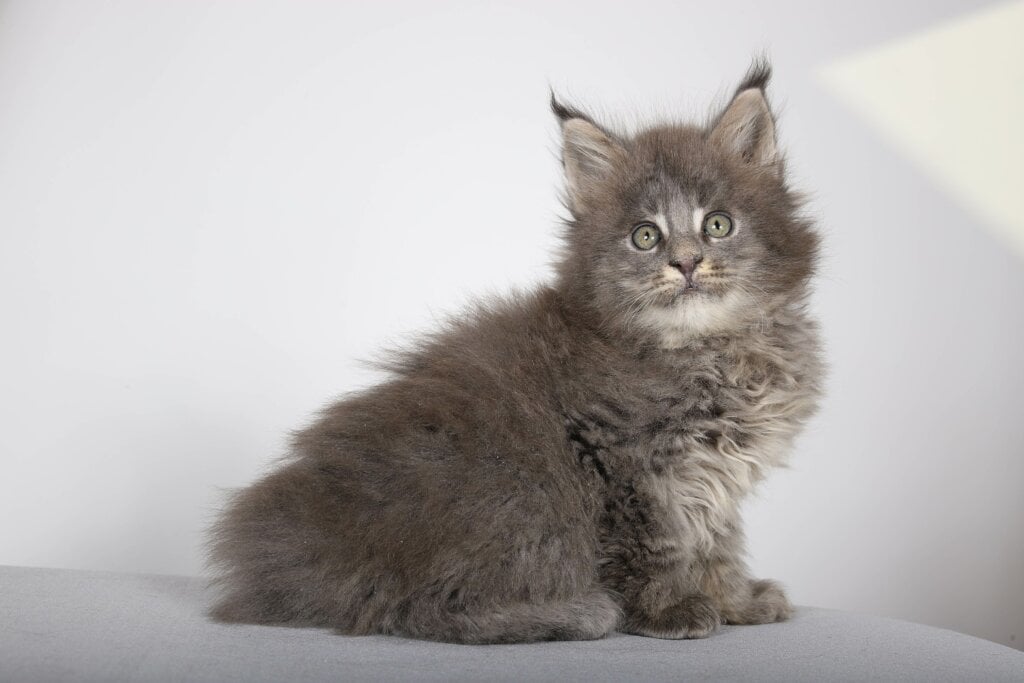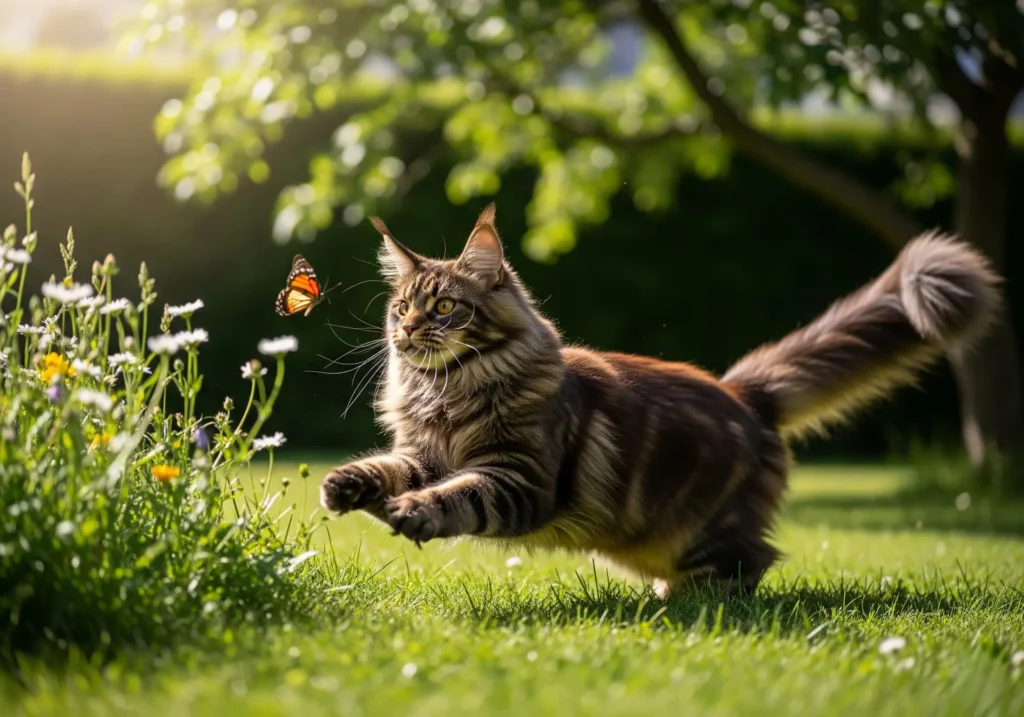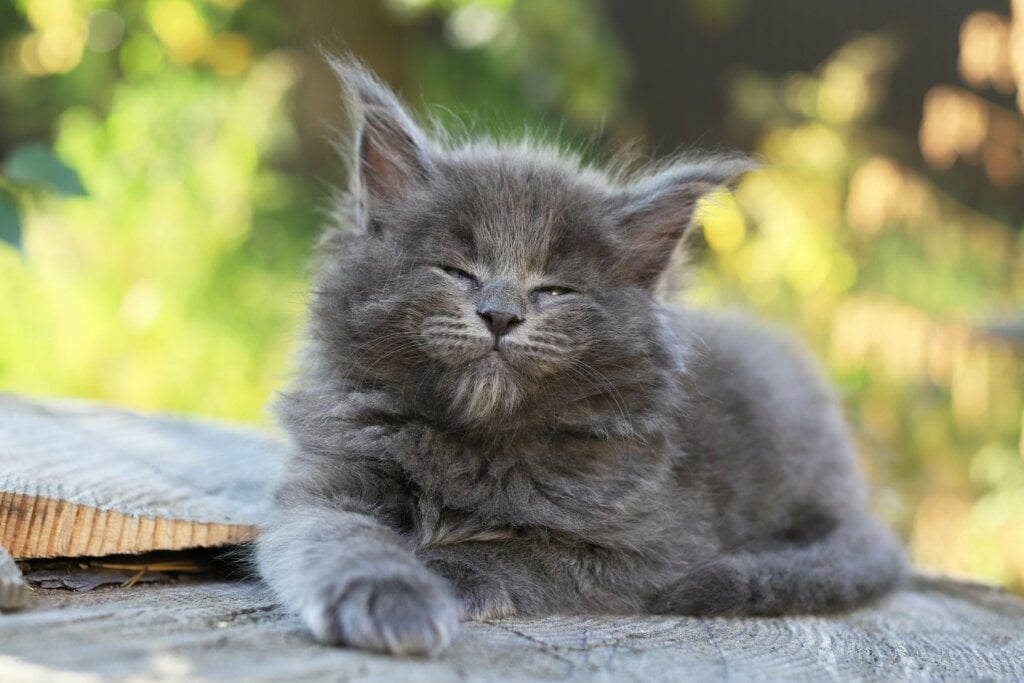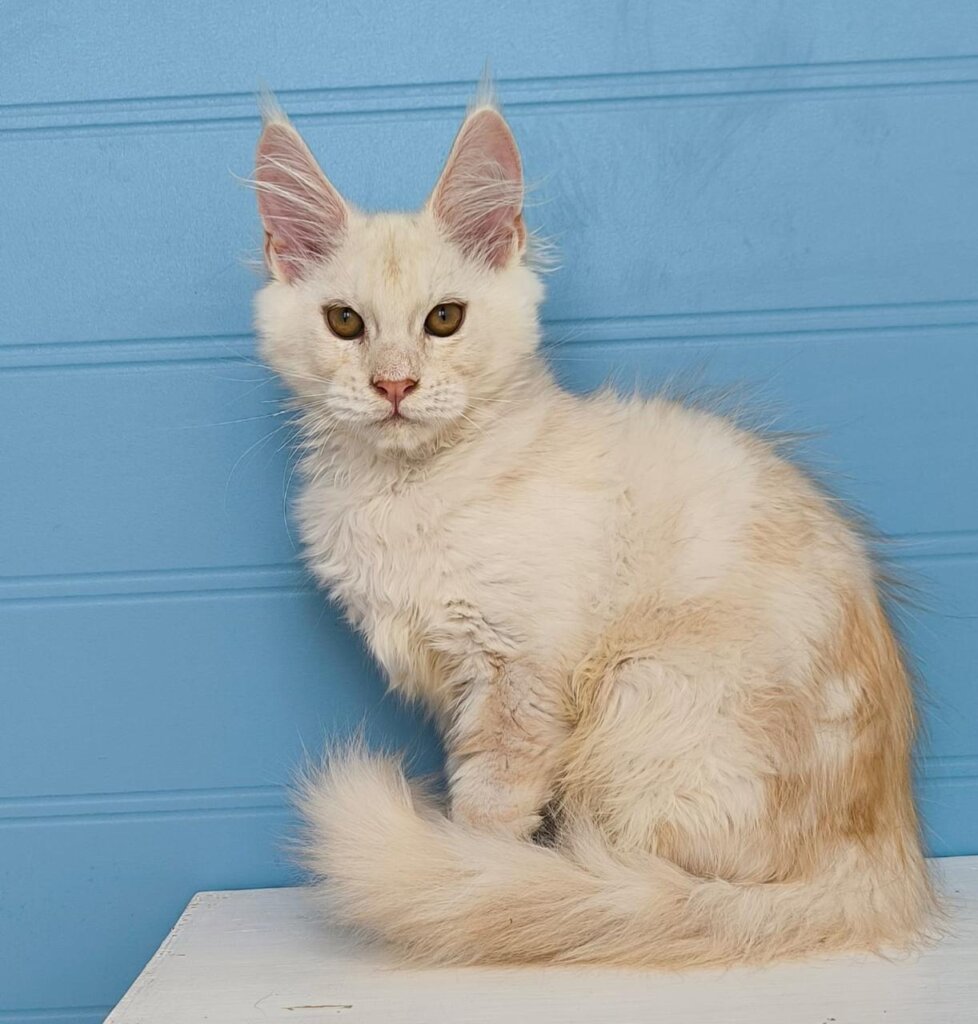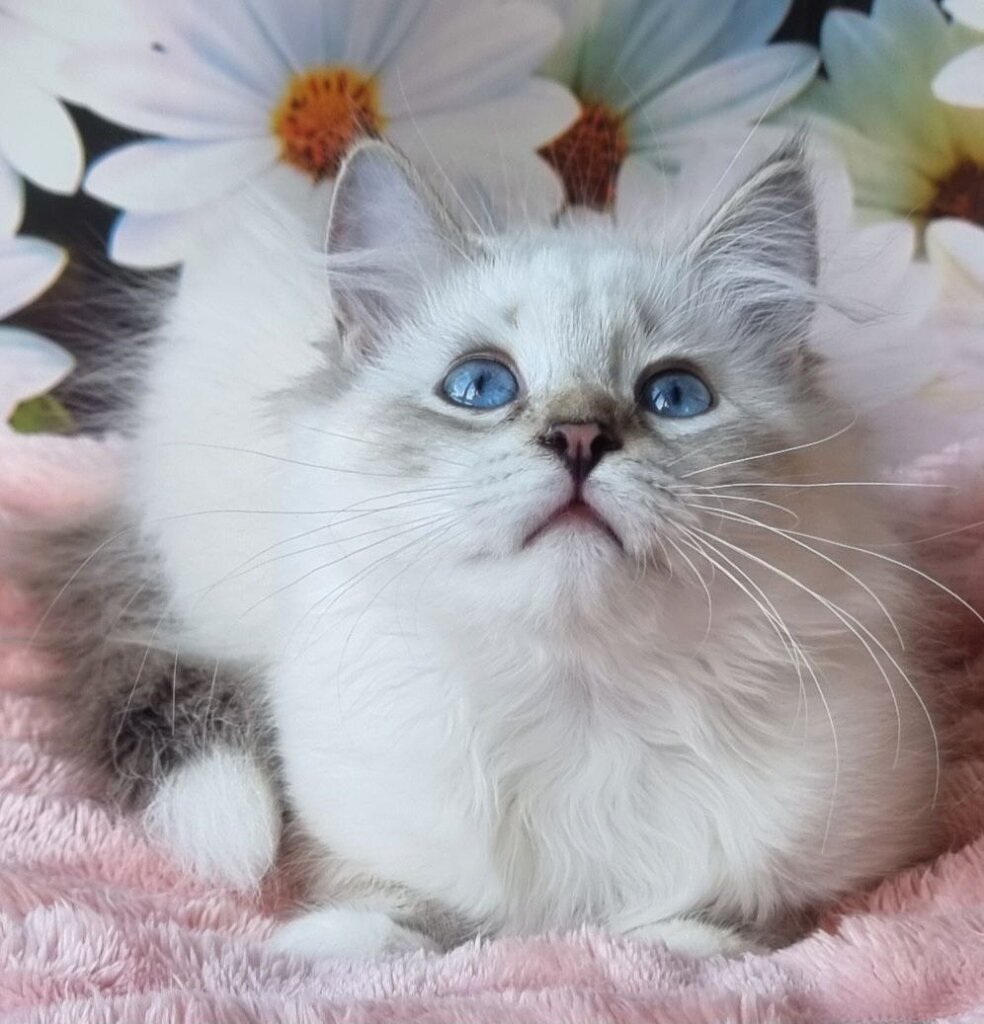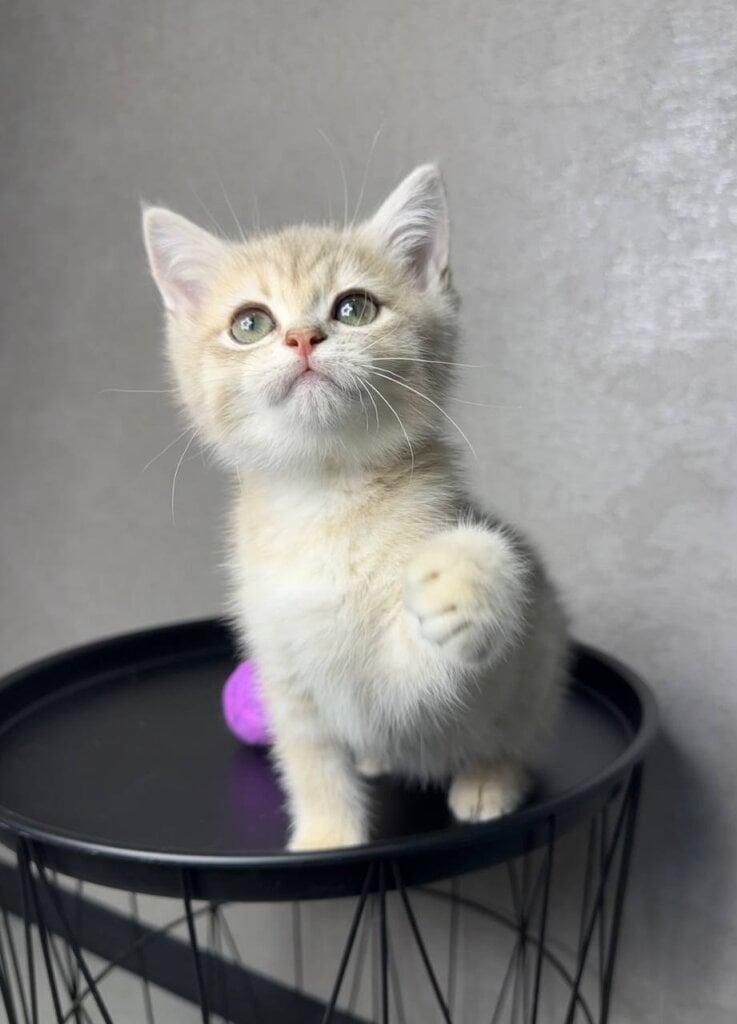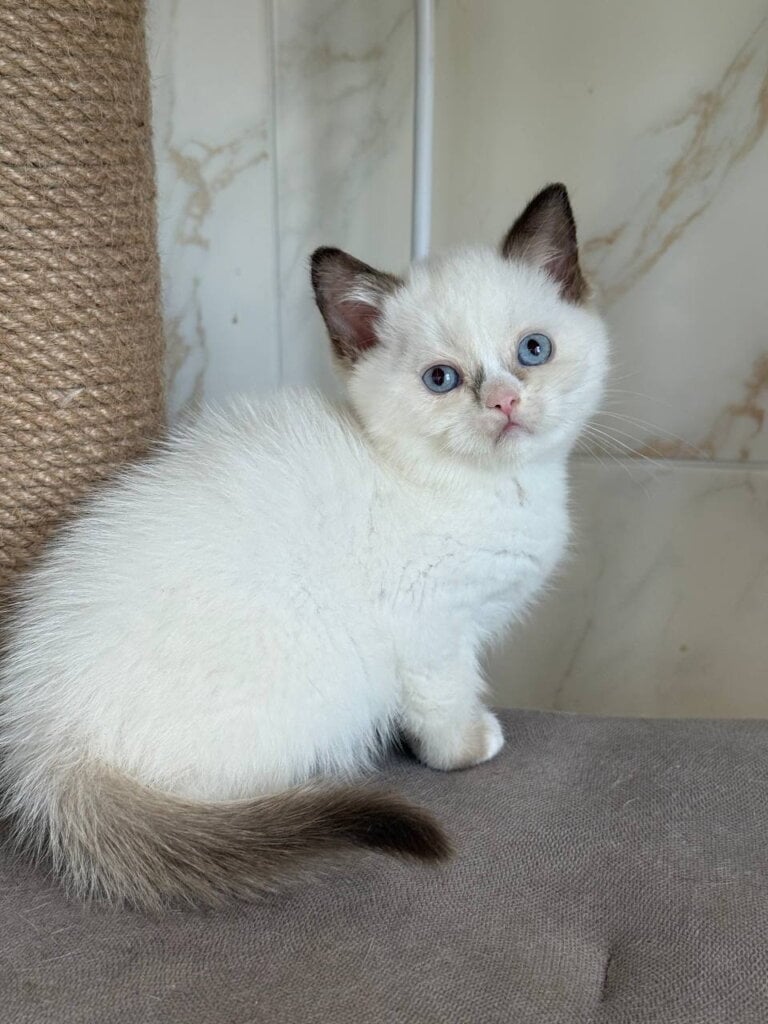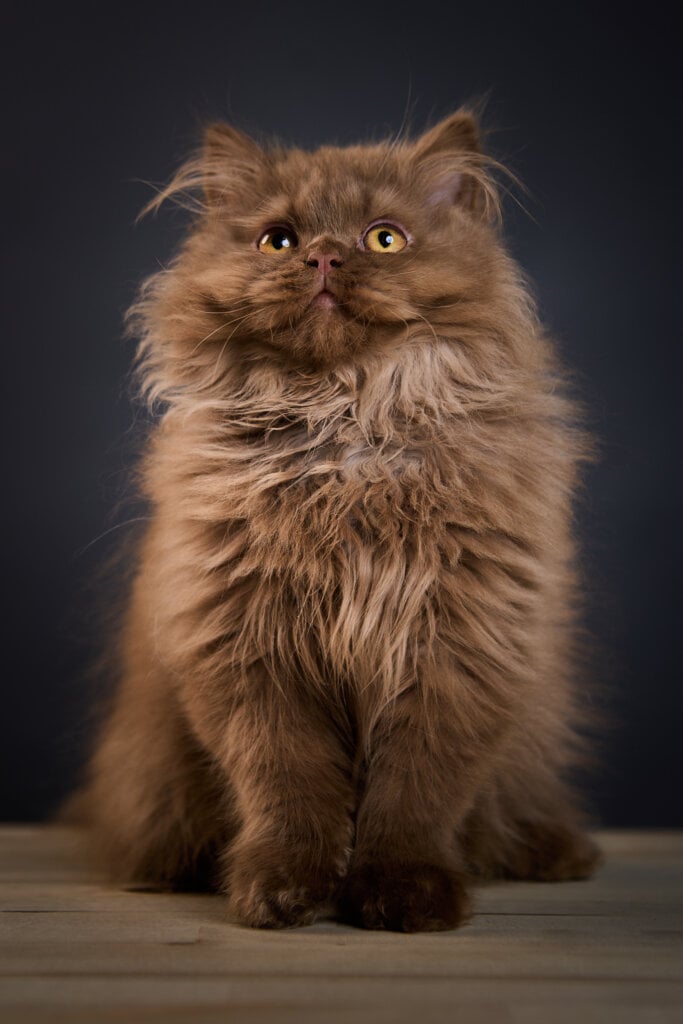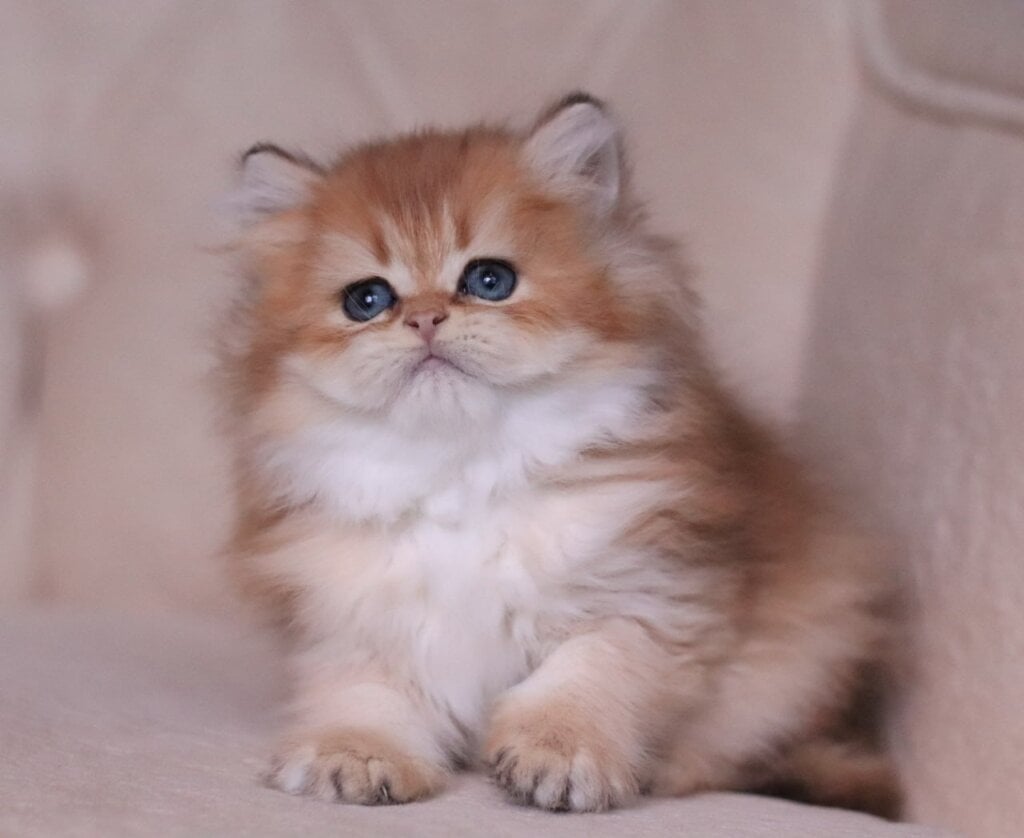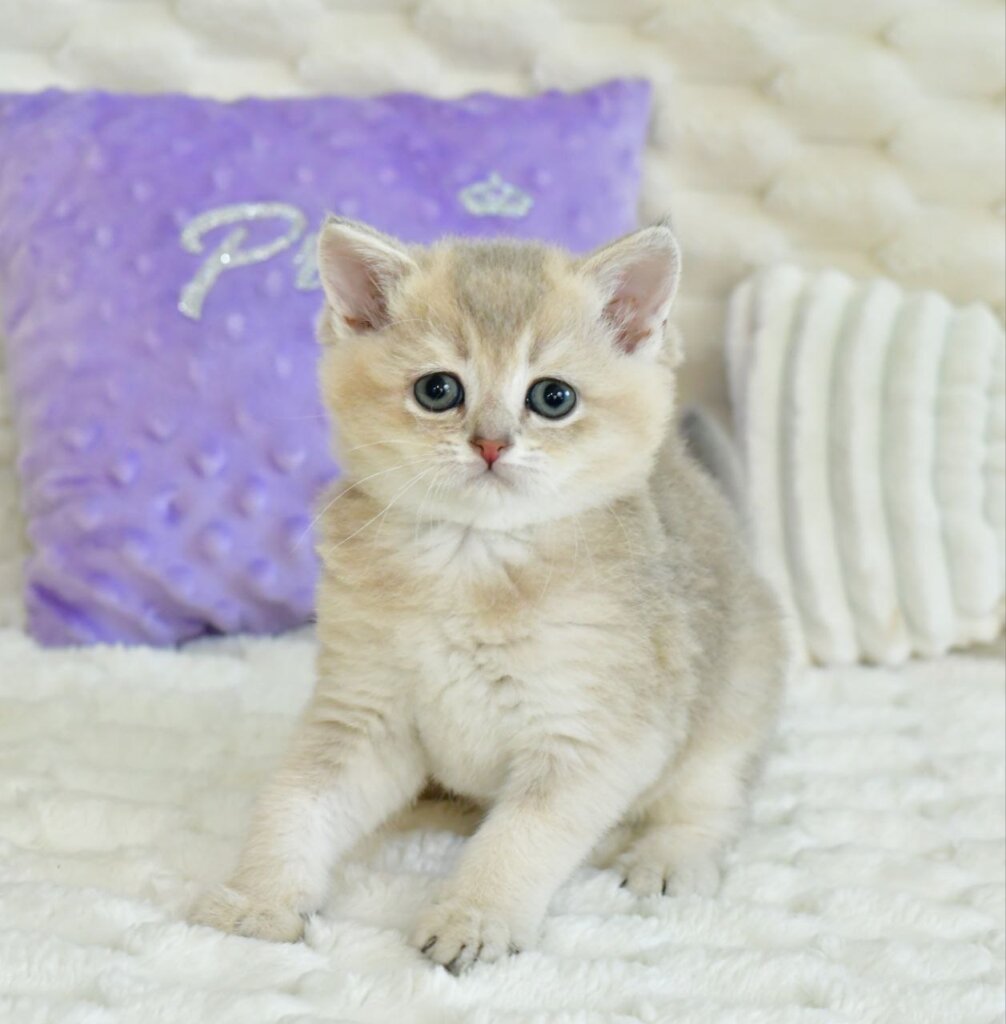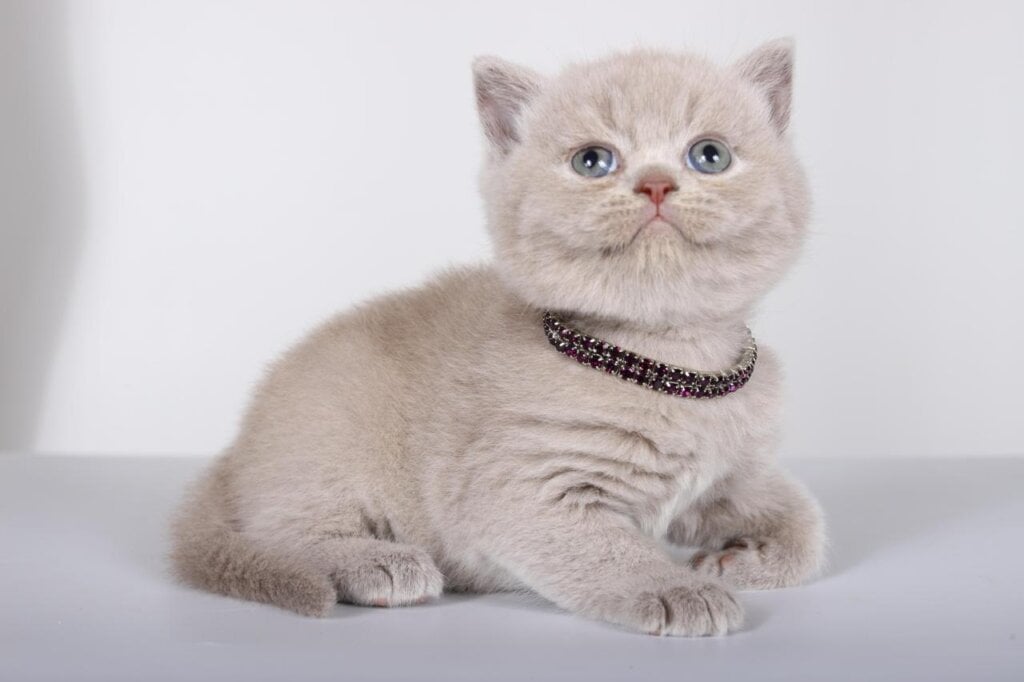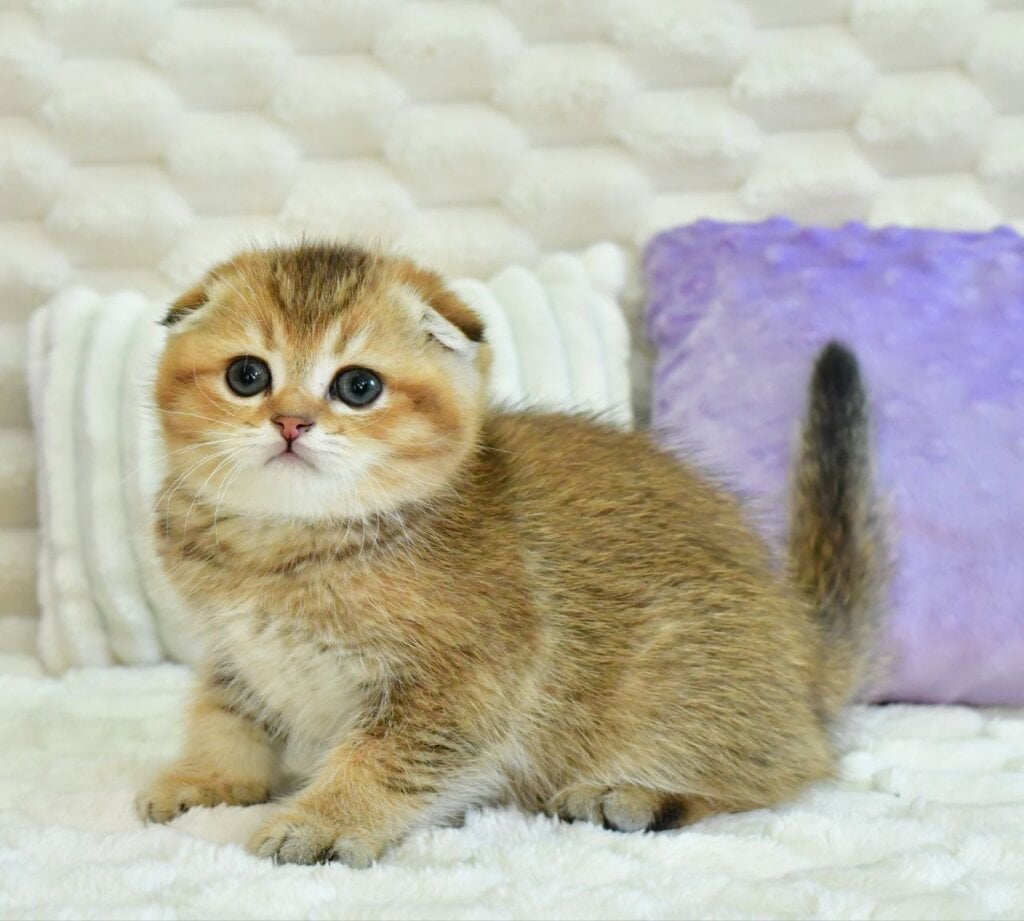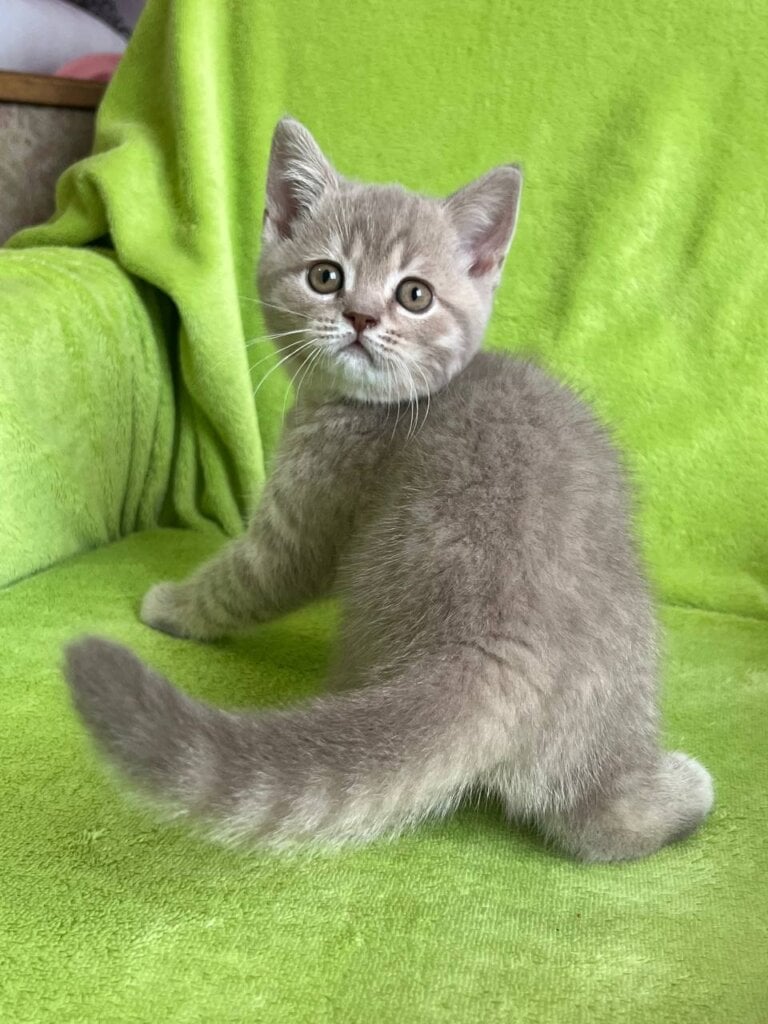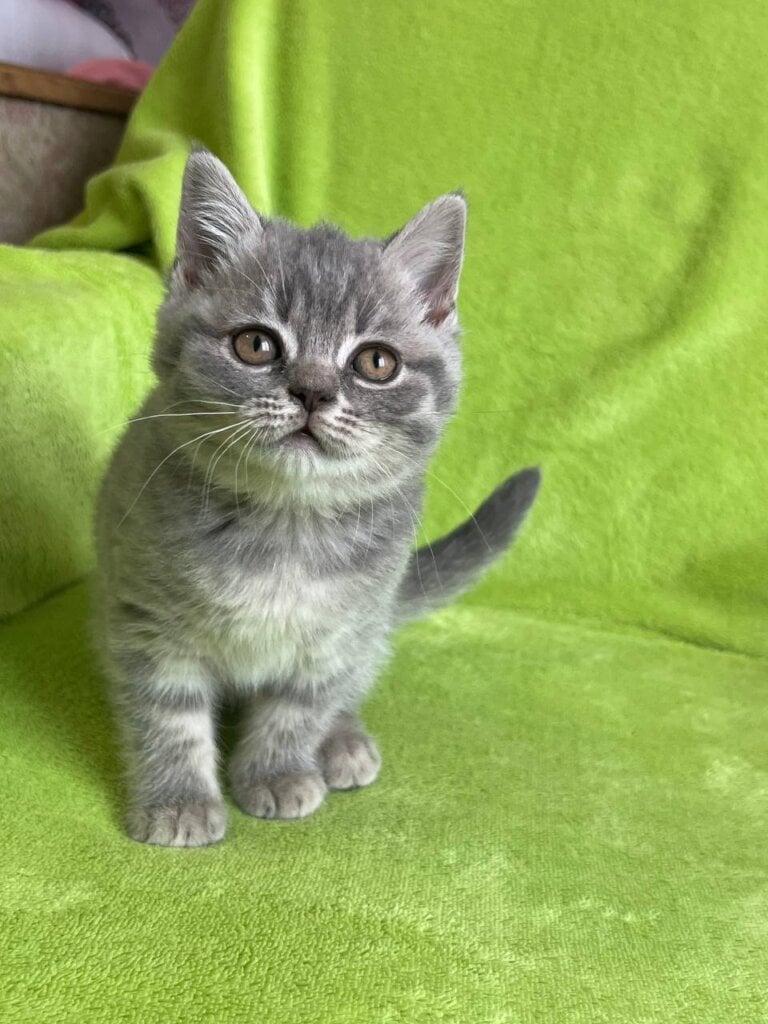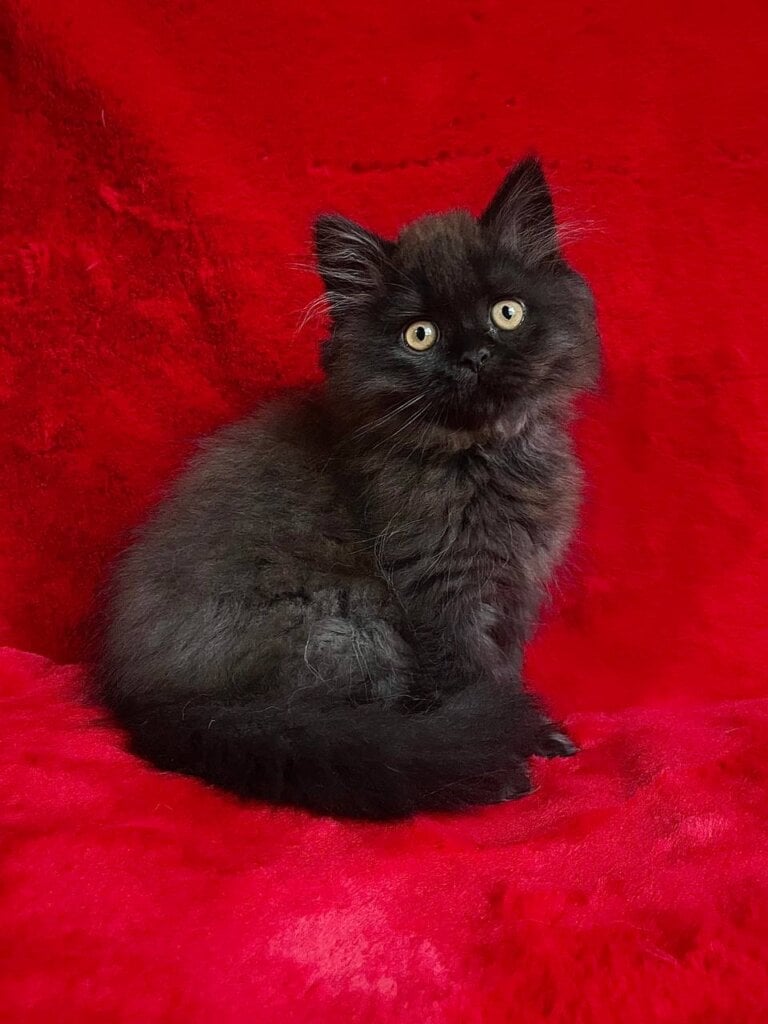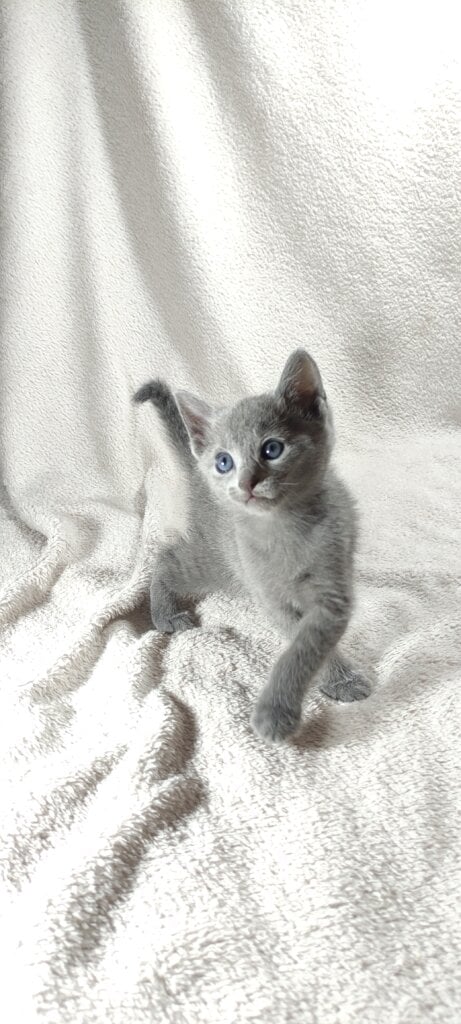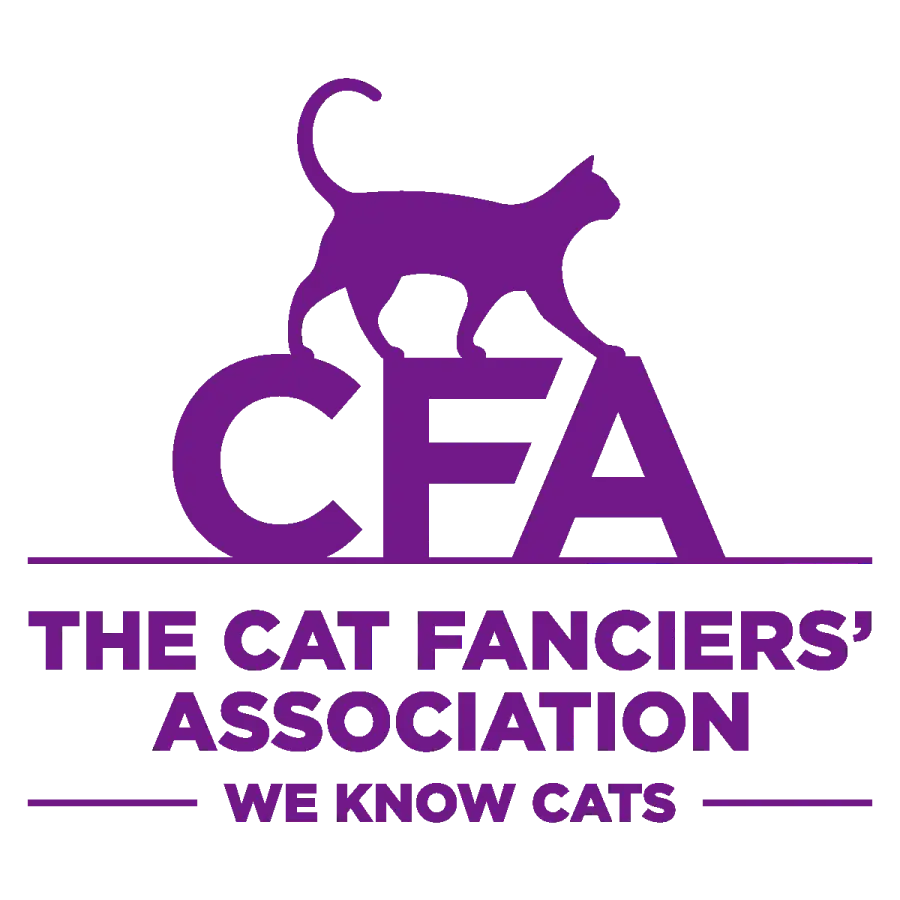What Are Maine Coon Coats?
Coat Characteristics
Maine Coon cat coats are nothing short of impressive, a thick double coat specially adapted for the lifestyle of these felines. This magnificent coat enhances their stunning good looks, but it has a functional purpose. Maine Coons have a thick undercoat that helps keep heat in, allowing them to thrive in cooler climates.
Additionally, their longer guard hairs help protect them from the cold. This remarkable adaptation is paired with a long, thick bushy tail that they frequently wrap around themselves for added insulation. Adding to their charm, the coat color of a Maine Coon doesn’t change after they’ve matured, making these felines all the more unique.
After all, Maine Coons are famous for their beautiful coats. Many of them possess a weird polydactyl trait that causes them to have extra toes, giving their paws a charming mitten-like appearance.
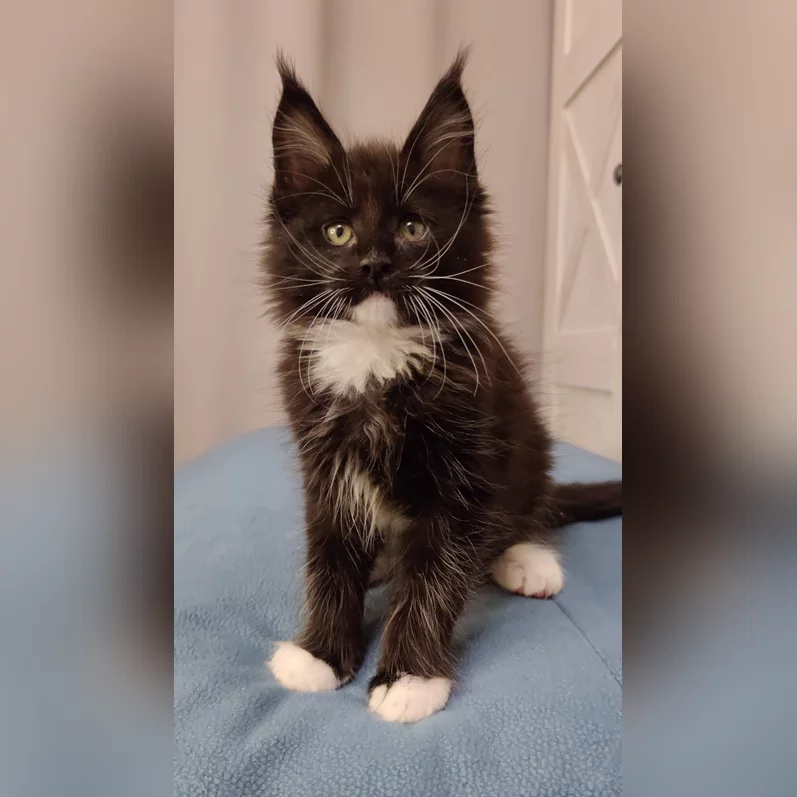
Seasonal Variations
Maine Coon coats change in intriguing seasonal ways. In winter, their fur gets much denser and fluffier, giving them the insulation they need to help keep the cold at bay. This adaptation is highly beneficial, enabling them to not only survive but flourish even in cold conditions, making them hardy companions in northern climates.
When summer arrives, that transition can be seen in their coat. It gets lighter and thinner, aiding them in keeping cool when the temperatures soar. This seasonal shedding process means that Maine Coons are never caught unprepared for fluctuating climates, which is just another testament to their incredible adaptability.
The color of their coats shifts with the seasons. Through this metamorphosis, Maine’s wild beauty is on display in an inspiring and magical way that never ceases to amaze.
Shedding Patterns
Shedding is a major aspect of life for Maine Coons. These furry felines love to shed, most notably during the spring and summer months. They can shed more than 50% more than other breeds, which can be quite a shock for first-time owners.
Regular grooming is very important to keep this droppage in check. Regular daily grooming with a slicker brush and metal comb is highly effective at removing their loose and dead hair. This practice goes a long way to minimizing the fur they leave strewn about your domicile.
Their distinctive smell, a product of the oils found in their coat, makes them all the more alluring. At first, shedding can seem like a deluge. The reward is a lean, happy Maine Coon, and that makes the work worth it!
A Maine Coon’s coat grows in about six months only a few inches. This slow growth highlights the importance of a regular grooming routine.
Factors Affecting Shedding
Weather and Climate
Maine Coons experience a unique coat cycle for summer and winter. Shedding is a complex process, and weather plays a huge role on this interesting procedure. As the air warms up and humidity increases, you’ll start to see more shedding.
Heat and humidity can induce long-term shedding in our cats. In order to keep cool, they shed their thicker winter coat. In more temperate climates, Maine Coons tend to keep less of a coat.
A good period to observe the seasonal shedding is during the transition between seasons. I’ve found it helpful to add some additional grooming sessions into the mix during these times. This is great for controlling loose fur and maintaining a healthy great looking coat.
In areas with more extreme seasonal changes, the difference between summer and winter shedding can be even more extreme.
Diet and Nutrition
What Maine Coons eat has a huge impact on their coat condition. Another factor that can cause shedding problems is an improper diet. Experts say more than half your diet should be made up of proteins.
They even recommend adding as much as 20% fats to help create the healthiest coat possible. A diet deficient in these nutrients can cause a dull coat and more shedding. Food allergies, like dairy, grains or beef, can lead to increased shedding of the coat as well.
Being proactive about your cat’s diet will go a long way to keeping shedding under control. Buy quality cat food for your Maine Coon. Additionally, talk to your veterinarian about ways you can help your dog get the most out of their nutrition.
This helps maintain a healthy coat and contributes to their overall good health.
Health and Age
Health and age are important factors in shedding. Underlying health conditions, such as thyroid disorders or skin infections, can cause increased shedding. Stress is another thing that can cause your Maine Coon to shed excessively.
It is key to monitor for new behavioral or environmental factors that may be stressful. Routine veterinary care is important for identifying and addressing health problems before they become more serious.
Even as Maine Coons become seniors, their shedding can be affected. Hormonal factors, like those triggered by pregnancy or sterilization surgery, can cause temporary shedding. Approximately 75% of Maine Coons are male.
This is likely to have an impact on their distinct shedding patterns. Senior cats often require additional regular grooming to maintain their coat. Proper hygiene is key as inadequate grooming can cause increased shedding.
Keeping shedding under control by making grooming a regular part of our routine is essential. In addition, it’s good for our relationship!
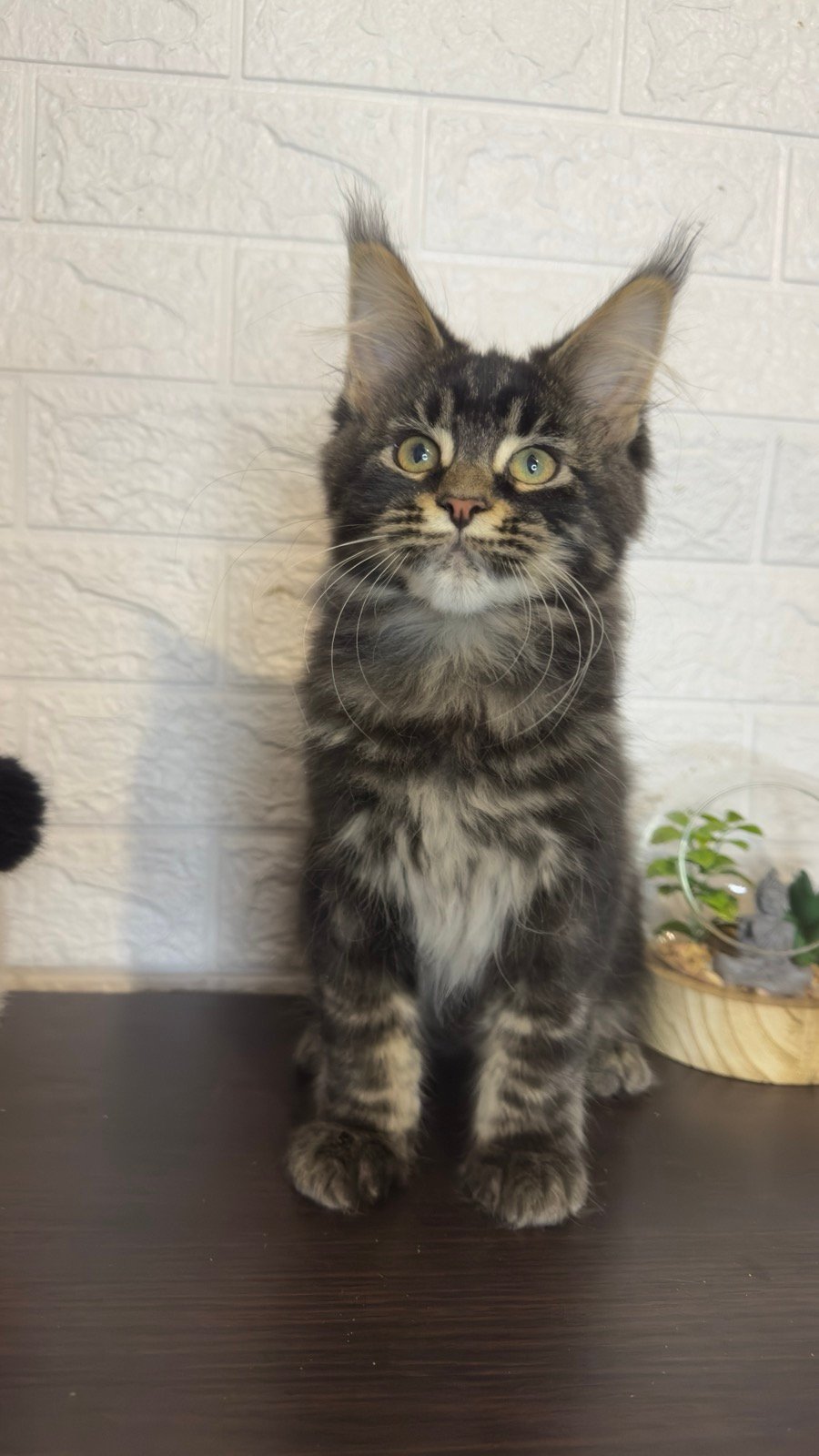
Managing Shedding Effectively
Regular Brushing Techniques
To minimize the shedding from a Maine Coon’s long coat, frequent brushing is your strongest weapon. This breed is known for having very thick, luxurious fur that most people love. Do be ready for a lot of shedding, especially as they transition from their summer to their winter coats.
For this reason, you’ll want to brush your Maine Coon at least two to three times a week. This will help maintain their coat and minimize shedding fur around your house. It does an excellent job of managing shedding, but it prevents mats and tangles from developing.
Daily or every other day brushing will prevent a huge mess from accumulating in your home. It’s an important part of maintaining your cat’s coat and your home!
Tools for Grooming
Selecting the proper grooming implements will go a long way towards keeping your Maine Coon’s fur under control. A good grooming brush or comb goes a long way. Find brushes with bristles long enough to penetrate the undercoat while avoiding scratching your kitty’s skin.
A rotating-tooth dematting comb quickly and safely removes mats and snarls. This style prevents you from yanking or injuring your furry friend. Most cat parents find that with the help of a de-shedding tool, they can eliminate a huge amount of loose fur.
This is partly why they are better able to manage shedding. We all know how hard it is to keep our homes fur-free. Create a few shaded spots where your Maine Coon can chill. Doing so will reduce the amount of hair on your couch and clothes.
Handling Mats and Tangles
Mats and tangles are often seen with longhaired cats, and during the Maine Coon’s seasonal shedding, this may be exacerbated. Monthly baths, or more frequently, are recommended for them to maintain a proper and clean coat, preventing matting.
If you find any mats, remove them carefully with your fingers first, then try a comb. In instances where mats are particularly stubborn, employing a mat splitter or visiting a professional groomer may be required.
To maintain your Maine Coon’s health and minimize excessive shedding, ensure you feed your cat a well-balanced diet. Ensure more than 50% of its ingredients are protein and 20% are fat for a lustrous, gorgeous coat.
Good nutrition can have a dramatic effect on coat condition, with measurable improvement seen within four months in nearly half of all cats! This is why proper nutrition is so important to achieving great coat management.
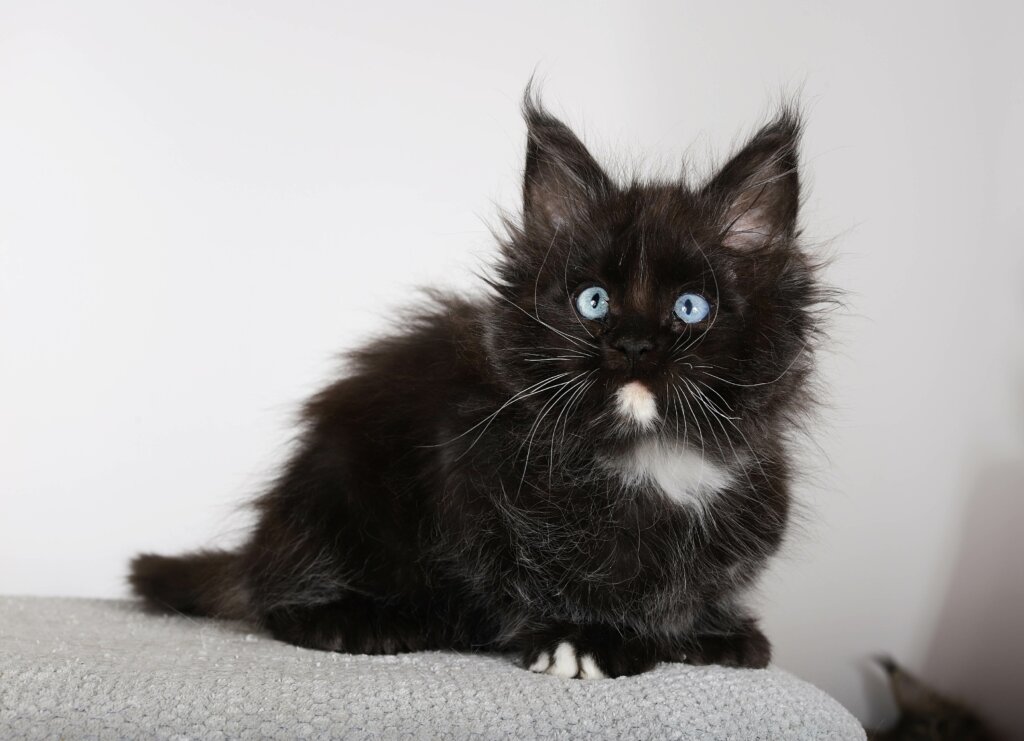
Grooming Tips for Maine Coons
When you picture Maine Coons, their stunning fur instantaneously pops into your head. These cats feature heavy, long coats that are prone to matting if not groomed consistently. It’s not only to make them look great; grooming on a regular basis helps keep their coat in optimal condition, clean and shiny, and prevent mats and tangles.
Nail Care Practices
Nail trimming is an important aspect of your Maine Coon’s grooming regimen. Overgrown nails can cause pain and injury to your cat. Regular trims, preferably every three weeks, keep nails from growing long enough to curl into their paw pads.
Use a cat claw clipper or nail grinder. Only trim the tips enough to avoid the quick, since if you cut into the quick it can result in bleeding. Begin this routine early with your kitten. Otherwise, they won’t adapt to the new routine as fast as you would like.
Ear Cleaning Tips
Maine Coons, like all cats, should have their ears regularly checked for dirt, wax, or signs of infection. A light wipe out with a cotton ball soaked in a pet-safe ear cleaner, like Vet’s Best Ear Relief, can go a long way toward keeping ears healthy.
Don’t use cotton swabs; they can pack debris deeper into the ear canal. If your cat shakes his head a lot, take note. If so, it might be time for a close evaluation, particularly if it’s scratching at its ears. A healthy ear will appear clean and have no foul odor.
Maintaining a Healthy Diet
Diet is a very important factor in your Maine Coon’s coat health and overall well-being. These cats do best on a high protein diet. Over 50% of their dietary intake is protein, and they receive up to 20% of their dietary protein from animal-based fats.
This balance contributes to a healthy, sleek coat and reduces shedding. A diet of high-quality commercial cat food, along with occasional treats of cooked chicken or fish, will give them what they need. Make sure they have a constant supply of fresh water to avoid dehydration, which can cause hair loss and other health problems.
Additional Grooming Essentials
Daily brushing combined with a slicker brush and a metal comb will help your Maine Coon maintain a healthy coat, removing loose hairs and decreasing shedding. This regimen is crucial to maintaining the quality of their majestic coat by preventing matting and tangling.
Baths should be kept to a minimum, no more than once a month as this will dry out their skin and coat. Grooming should begin as a kitten so your Maine Coon cat becomes familiar and comfortable with grooming throughout its life.
Since stress and anxiety can lead to increased shedding, providing a calm grooming environment will benefit your Maine Coon’s coat and overall health.
